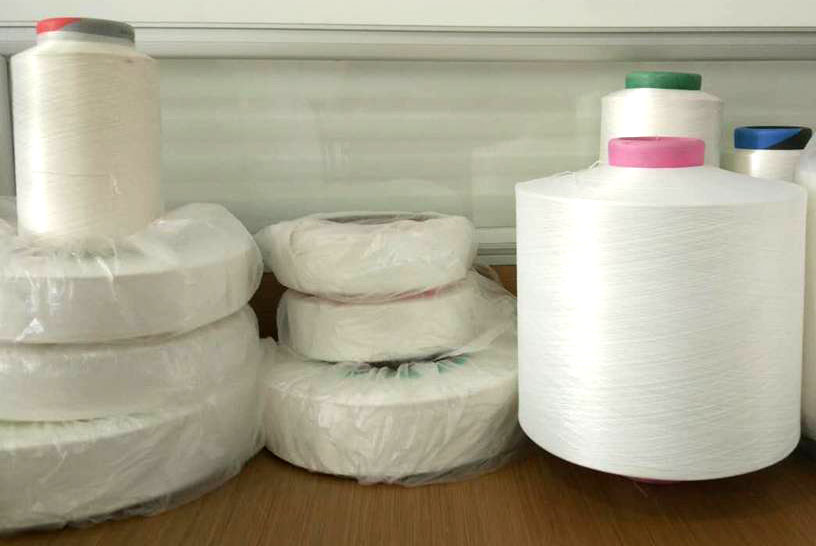Top shirt
Polyester Yarn ITY, POY and FDY Yarn with different contractility are entangled into filaments with periodic intermingled points by air jet flow. Because the two kinds of fibers have different shrinkage, The dyeing and finishing process can make the fabric have different characteristics, such as drape, fluff, wrinkle. Widely used in knitting, weaving and so on all kinds of textile machinery, mainly for wool-like, linen-like fabric. One step and two step both are available
Polyester Yarn ITY ITY Fabric,Polyester ITY Yarn,Polyester Yarn DTY,Polyester Yarn ITY YIBIN MERRY TRADING CO. LTD. , https://www.cnmerry.com
1. Starting pin = (1/2 bust - 1 cm) × horizontal density + sewing consumption (needle)
2. Number of length lines = (length - bottom rib) × straight secret
3. The number of long lines = (length - bottom rib - hanging shoulder) × straight secret
4. Shoulder width needle = shoulder width × horizontal tight seam consumption (needle)
5. Number of total shoulder straps = shoulder length × straight density
6. Number of needles for hanging shoulder = (12 number of bust stitches - number of shoulder width needles) ÷ 2
7. Hanging shoulder method:
After the 3 needles to 6 needles are closed, the needles are generally reduced by 1 needle every 2 rows, and the number of needles to be collected is collected within a height of 7 cm to 9 cm.
8. Number of back neckline stitches = back neckline width × cross stitch + seam consumption (needle)
9. Number of shoulders = (width of shoulder width - number of needles with back neckline) ÷ 2
10. Number of needles per row of shoulder slope = number of shoulders number of shoulders
Top shirt
1. Starting from the bottom = (1/2 bust + 1 cm) × horizontal density + sewing consumption (needle)
2. The length of the line is the same as the back piece "2".
3. The number of long lines is the same as the rear piece "3".
4. The number of shoulder width is the same as the rear piece "4".
5. The total number of hanging shoulders is the same as the back piece "5".
6. The number of stitches on the shoulder is the same as the back piece “6â€.
7. Hanging shoulder pinning method: It can be compared with the back piece, but the front piece is 1 cm more than the back piece, and the needle is collected more than the back piece. Can be in the flat,
Remove the number of needles of this 1 cm.
Sleeve
When weaving the sleeve, its direct and transverse density is slightly different from the original density:
Sleeve width = original density × 125% sleeve straight density = will density × 95%
1. Cuff pinning = sleeve width × 2 × sleeve width + seam consumption (needle)
2. Sleeve length = (sleeve length - cuff rib length) × sleeve straight density + seam consumption (needle)
3. Number of sleeves of the sleeve = sleeve width × 2 × sleeve width + seam consumption (needle)
4. The number of stitches should be added to each side of the sleeve = (number of sleeves on the sleeve - number of sleeves) ÷ 2
5. Sleeve line number = sleeve length line number - sleeve mountain line number
6. Number of sleeves in the sleeve = sleeve length height × sleeve straight density × + seam consumption (needle)
7. Number of needles on one side of sleeve mountain = (number of sleeves in the sleeve - number of needles in the sleeve) ÷ 2
Collar film
1. Number of collars = (collar depth × 2+ back collar width + 2 cm) × ribs horizontally dense
2. Number of collar lines = collar height × rib line straight density
Other
When doing the weaving process, some regular dimensional relationships and simple calculation methods can be used for reference:
1. The average adult sleeve width is 3 cm to 3.5 cm less than the hanging shoulder, and the child's sleeve width is 1.5 cm to 2 cm less than the hanging shoulder.
2. The cuffs of the average men's shirt are 21 cm to 24 cm wide, and the cuffs of the blouse are 17 cm to 21 cm wide.
3. When weaving the sleeves, if the needle is added, it should be fast and slow first. If the needle is reduced, it will be slower and faster.
4. Adults' sleeves are generally 12 cm to 14 cm in height.
5. The number of rows of needles in the sleeves is close to the number of rows of needles on the front and back shoulders.
6. For the convenience of weaving operation, the general neckline can not be considered.
7. The back neckline width is generally 1/3 of the shoulder width. 